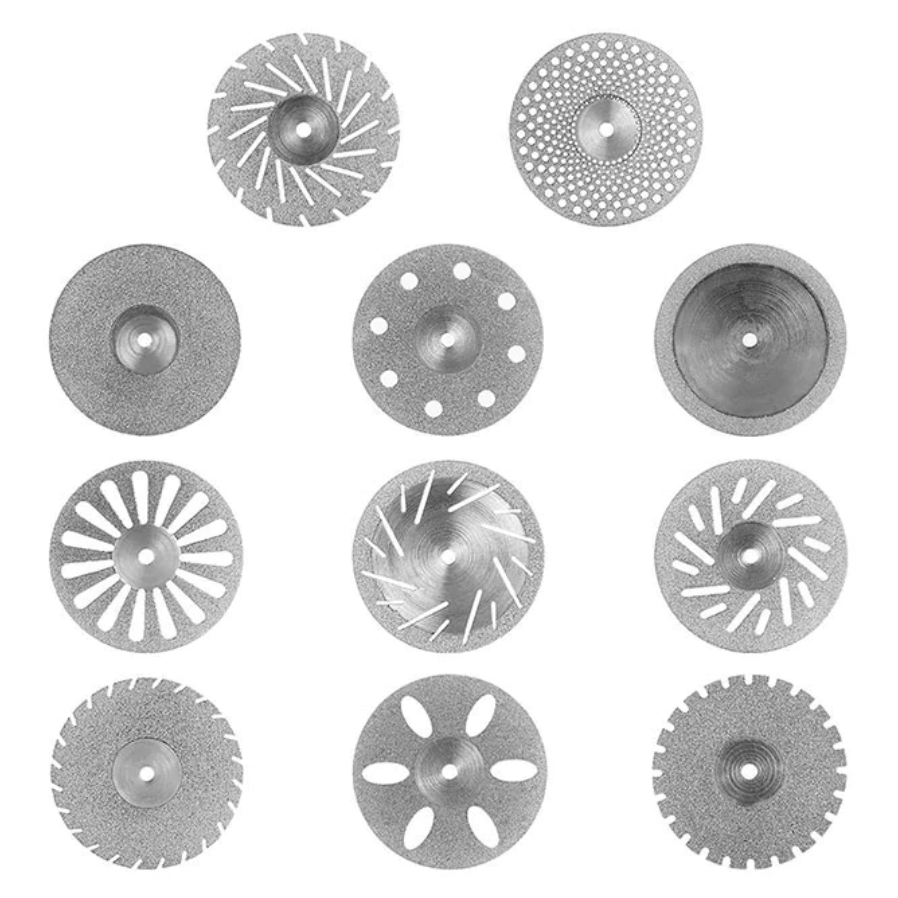Dental restoration is the process of repairing or replacing a damaged tooth to restore its function and aesthetic appearance. One of the most important aspects of dental restoration is achieving a smooth and accurate finish, which is crucial for ensuring the longevity and effectiveness of the restoration. Diamond discs are a popular choice for achieving this goal, thanks to their numerous advantages over other materials.
What are Diamond Discs?
Diamond discs are made from diamond particles that are embedded in a metal matrix, giving them the ability to cut through a wide range of materials with ease.

The Advantages of Diamond Discs for Dental Restoration
Unlike other materials, such as tungsten carbide burs or ceramic discs, diamond discs are able to maintain their sharpness for much longer, resulting in a smoother and more accurate finish. This is particularly important when working with hard materials, such as enamel or ceramic, which can be difficult to cut with other materials.
Another advantage of diamond discs is their versatility. They can be used for a wide range of dental restoration applications, including shaping, contouring, and polishing. Depending on the specific type of diamond disc, dental professionals can achieve a range of finishes, from coarse to fine, to achieve the desired result. In addition, diamond discs can be used with a variety of handpieces, making them a convenient and flexible choice for dental professionals.

Perhaps the most significant advantage of diamond discs is their ability to produce a smooth and accurate finish, which is critical for the success of dental restorations. The smoothness of the finish is important for several reasons. First, it helps to prevent the accumulation of bacteria and plaque, which can lead to tooth decay and gum disease over time. Second, it helps to ensure that the restoration is comfortable for the patient, with no rough or jagged edges that can cause irritation or discomfort.
The accuracy of the finish is also important for several reasons. First, it ensures that the restoration fits properly and is able to function as intended. This is particularly important for restorations that are designed to replace missing or damaged teeth, as they must be able to withstand the forces of biting and chewing. Second, it helps to ensure that the restoration is aesthetically pleasing and blends in seamlessly with the surrounding teeth. This is particularly important for front teeth, where the appearance of the restoration can have a significant impact on the patient's confidence and self-esteem.
There are several best practices that dental professionals should follow when using diamond discs for dental restoration. First, it is important to choose the right type of diamond disc for the specific application. This will depend on the material that is being worked on, as well as the desired finish. Second, it is important to use the diamond disc correctly, following the manufacturer's instructions and taking care not to apply too much pressure or force. Finally, it is important to maintain the diamond disc properly, keeping it clean and free from debris to ensure optimal performance.
Potential Drawbacks and Limitations of Using Diamond Discs for Dental Restoration
While diamond discs offer numerous advantages for dental restoration, there are also some potential drawbacks and limitations to consider. For example, diamond discs can be more expensive than other materials, which may impact their accessibility for some dental practices. In addition, diamond discs can generate heat during use, which can cause discomfort for the patient and potentially damage the surrounding tissue. However, these risks can be mitigated through proper technique and the use of cooling agents, such as water spray or air flow.
Conclusion
In conclusion, diamond discs offer numerous advantages for dental restoration, including their ability to produce a smooth and accurate finish, their versatility, and their durability. Dental professionals should follow best practices when using diamond discs to ensure optimal results and minimize the risk of complications. While there are some potential drawbacks and limitations to consider, the benefits of diamond discs make them a valuable tool for any dental practice looking to achieve high-quality and long-lasting restorations.



